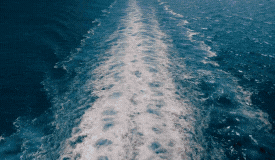PHILIPSBURG:--- Sint Maarten, with its small dimensions and its geographic location, is very vulnerable to many factors, such as the case with most Small Island Developing States (SIDS as recognized by the United Nations). All SIDS encounter similar sustainable development challenges, including small but growing populations, limited resources, remoteness, susceptibility to natural disasters, vulnerability to external shocks, excessive dependence on international trade, and fragile environments. The latter is an issue that has not gotten as much attention as deserved. Over the past few decades focus was more on 'development' and not on the environmental issues at hand, which can largely be attributed to the anthropogenic factors associated with 'development'.
One of the main environmental issues momentarily is the large Tilapia die-offs occurring in the Great Salt Pond. The die-offs have been known to happen over the years, but have been increasing in occurrences and scale over time.
The introduction of the non-indigenous Tilapia species has come with some positive aspects as they are known to eat mosquito larvae and thrive on nutrients otherwise unused by other organisms, thereby being known as a species to thrive in poor water quality. They grow rapidly and can tolerate high fish densities. This however brings along negative consequences to the natural ecosystem; they can out-compete the naturally occurring species and thereby disturb a natural equilibrium. As they are quite a resilient fish species (except for their non-resistance to colder waters) it is hard to eliminate such a species which is also known as one of the top 100 World's Worst Alien Invasive Species by International Union for Conservation of Nature's (IUCN).
Tarpon is, for example, a fish species that naturally occurs in the Great Salt Pond and our surrounding waters. Just like Tilapia it can survive in brackish water, but different to Tilapia, and many other fish species, Tarpon can withstand low levels of dissolved oxygen due to their swim bladders as well as being able to 'breathe' air by gulping air at the surface. This in itself already demonstrates a reason for the Tarpon species not being affected by the lowered water quality (lower levels of dissolved oxygen) that is presently thought to be occurring.
During many of the prior fish die-offs the Nature Foundation has analyzed water samples from the affected area showing exactly that, the nutrient concentrations are far from optimal and the dissolved oxygen levels being low, pH levels being subpar and coliform bacteria being present. The high levels of ammonia also correspond to the behavior shown by the Tilapia prior to succumbing to the elements. It is however of importance to know that all these elements are interrelated, with one concentration or element affecting the other due to chemical bonds being either broken or created. It is therefore of high importance to do an in-depth analyses of what exactly is occurring in the Great Salt Pond, also as it relates to heavy metals and any other toxins that leech into the Great Salt Pond through unsustainable human impact on of the last remaining water bodies of the island.
With this reasoning the Ministry of VROMI, responsible for environmental issues, and the Ministry of Public Health, Social Development and Labor (VSA), responsible for public health matters, have been collaborating on finding a solution for this situation; trying to find a pro-active solution instead of resorting to reactive clean-up efforts which cause a nuisance of many of the residents of that area (smell, traffic, flies, etc.). As it is an environmental issue resulting in a public health risk it is of great importance for these two Ministries to combine efforts as well as consult the environmental NGO's that have a history of handling such issues as well as having at-hand knowledge of environmental health. Furthermore advice will have to be sought from experts on the Tilapia fish and toxicological investigations of the fish will have to be performed.
It is a known fact that fish bio-accumulate toxins which can affect human health. Without knowing what the exact cause of the fish die-offs is and what the quality of the fish residing in the Great Salt Pond is, it is highly recommended NOT to consume any fish products acquired from the Pond. This, at least until the fish die-off matter is resolved and the water quality of the historical Great Salt Pond is enhanced.
Press Release from Inspectorate of the Ministry of VSA












